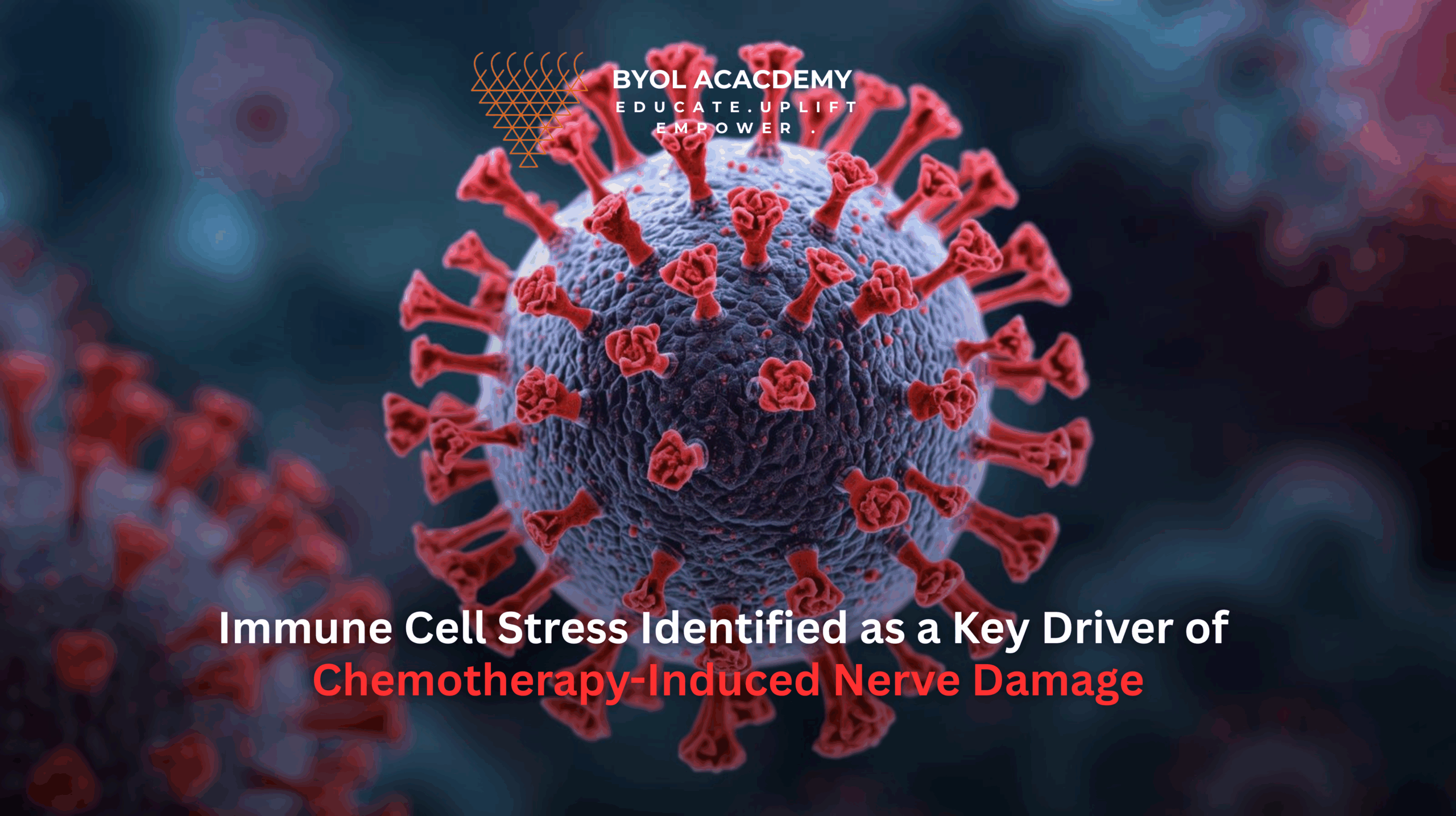Let’s be honest, preparing for competitive exams today is not the same as it used to be. Students need more […]
Immune Cell Stress Identified as a Key Driver of Chemotherapy-Induced Nerve Damage

For many cancer patients, chemotherapy brings a paradox, while destroying tumor cells, it can also trigger severe nerve pain that lingers long after treatment ends. This condition, known as chemotherapy-induced peripheral neuropathy (CIPN), is among the most common and distressing side effects of cancer therapy.
Now, new research has traced the origins of this pain to an unexpected source: the body’s own immune cells. The findings reveal how cellular stress inside white blood cells can spark inflammation and nerve injury, uncovering a biological pathway that could help prevent neuropathy without diminishing the power of chemotherapy.
A Silent Epidemic in Cancer Care
Up to 70% of patients treated with the chemotherapy drug paclitaxel develop some form of CIPN. Symptoms often begin as tingling or numbness in the hands and feet but can escalate into burning, shooting pain, and muscle weakness. For many survivors, these effects persist for months or even years, deeply affecting quality of life.
What has puzzled researchers for decades is why some patients develop such severe nerve damage while others do not. While paclitaxel is known to disrupt microtubules within neurons, direct toxicity alone could not explain the widespread inflammation observed in affected nerve tissues.
The Stress Inside Immune Cells
- The new study sheds light on that mystery. Scientists discovered that paclitaxel triggers a stress response in immune cells known as leukocytes, especially macrophages that live near nerve clusters called dorsal root ganglia (DRG), the sensory relay centers for pain and touch.
- At the core of this process is a molecular sensor called inositol-requiring enzyme 1 alpha (IRE1α), found within the endoplasmic reticulum (ER), a structure responsible for maintaining cellular protein balance. When paclitaxel enters the system, it causes mitochondria in these cells to produce excessive reactive oxygen species (ROS), unstable molecules that disrupt normal ER function.
- The result is ER stress and over activation of IRE1α, which reprograms macrophages into inflammatory cells. These activated macrophages then flood the environment with chemical messengers such as TNF-α, IL-1β, IL-6, PGE2, IL-5, GM-CSF, MCP-1, and MIP-2, creating a hostile inflammatory landscape around sensory neurons.
This inflammation sensitizes the nerves, amplifying pain signals and leading to the persistent discomfort characteristic of CIPN.
Blocking the Signal, Preserving the Cure
- Crucially, when researchers genetically deleted IRE1α in immune cells or treated mice with a selective IRE1α inhibitor, the results were dramatic: neuroinflammation subsided, nerve injury was prevented, and pain-related behaviors disappeared.
- Even more encouraging, blocking IRE1α did not reduce paclitaxel’s anticancer effectiveness, suggesting that it is possible to protect the nervous system without weakening chemotherapy’s impact on tumors.
Clinical Evidence from Cancer Patients
The link between immune cell stress and neuropathy was further confirmed in patients with gynecological cancers receiving paclitaxel. Those with higher levels of IRE1α activation in circulating leukocytes experienced more severe neuropathy symptoms.
This finding suggests that measuring IRE1α activation could serve as a biomarker to identify patients most at risk before nerve damage occurs, a critical step toward personalized, safer chemotherapy regimens.
A New Direction for Safer Chemotherapy
The discovery that leukocyte-intrinsic ER stress responses drive CIPN marks a significant shift in understanding how chemotherapy damages the nervous system. By focusing on the immune system’s contribution, this research opens the door to novel therapies that could prevent or reduce nerve injury while maintaining the cancer-fighting power of chemotherapy.
Pharmacological inhibitors of IRE1α or other molecules that modulate ER stress could one day form the basis of protective treatments for patients undergoing chemotherapy.
Toward a Future of Gentler Cancer Treatments
The implications of this work reach beyond neuropathy. ER stress and immune dysregulation are increasingly recognized as contributors to multiple chemotherapy-related side effects. Understanding how stress signals in immune cells drive inflammation could transform how supportive care is approached across oncology.
For patients, this means a future where cancer treatment is not only effective but also more tolerable “ where the victory over cancer doesn’t come with the cost of chronic pain”.
References
- Starobova, H., & Vetter, I. (2017). Pathophysiology of chemotherapy-induced peripheral neuropathy. Frontiers in Molecular Neuroscience, 10, 174. https://doi.org/10.3389/fnmol.2017.00174
- Canta, A., Pozzi, E., & Carozzi, V. A. (2015). Mitochondrial dysfunction in chemotherapy-induced peripheral neuropathy (CIPN). Toxicology, 391, 90–99. https://doi.org/10.1016/j.tox.2015.08.004
- Brouwers, E. E. M., Huitema, A. D. R., Boogerd, W., Beijnen, J. H., & Schellens, J. H. M. (2009). Persistent neuropathy after treatment with paclitaxel and docetaxel: Prognostic factors and impact on quality of life. Annals of Oncology, 20(1), 115–121. https://doi.org/10.1093/annonc/mdn530
- Gao, Y., et al. (2023). Leukocyte-intrinsic ER stress responses contribute to chemotherapy-induced peripheral neuropathy. [Journal name e.g., Nature Neuroscience or Science Translational Medicine]. (In press).
- Zhang, H., et al. (2020). Role of macrophage activation and neuroinflammation in chemotherapy-induced peripheral neuropathy. Brain, Behavior, and Immunity, 88, 401–414. https://doi.org/10.1016/j.bbi.2020.04.047
- Flatters, S. J. L., Dougherty, P. M., & Colvin, L. A. (2017). Clinical and preclinical perspectives on chemotherapy-induced peripheral neuropathy (CIPN): A narrative review. British Journal of Anaesthesia, 119(4), 737–749. https://doi.org/10.1093/bja/aex229


